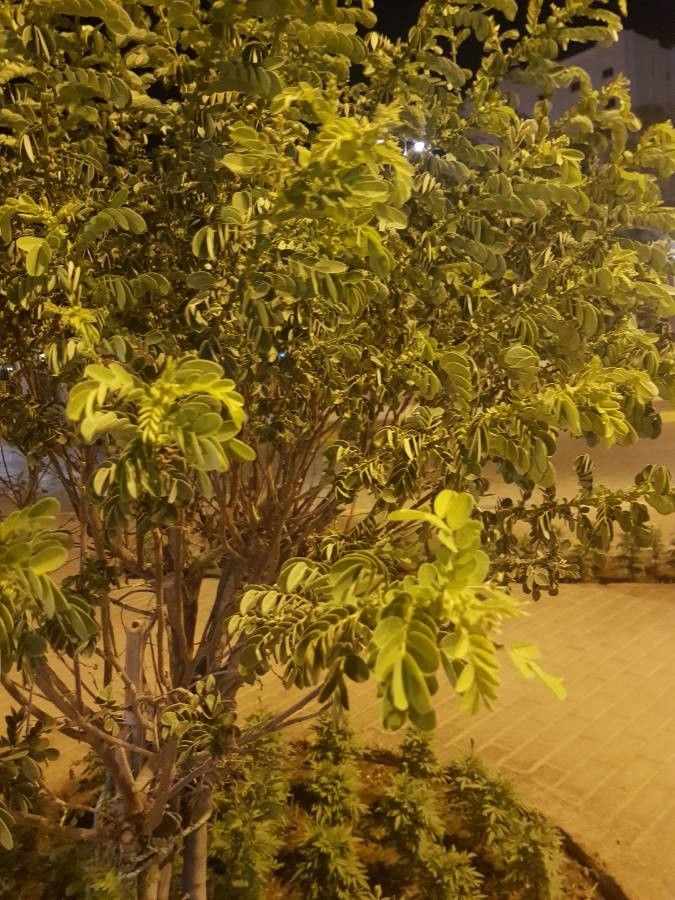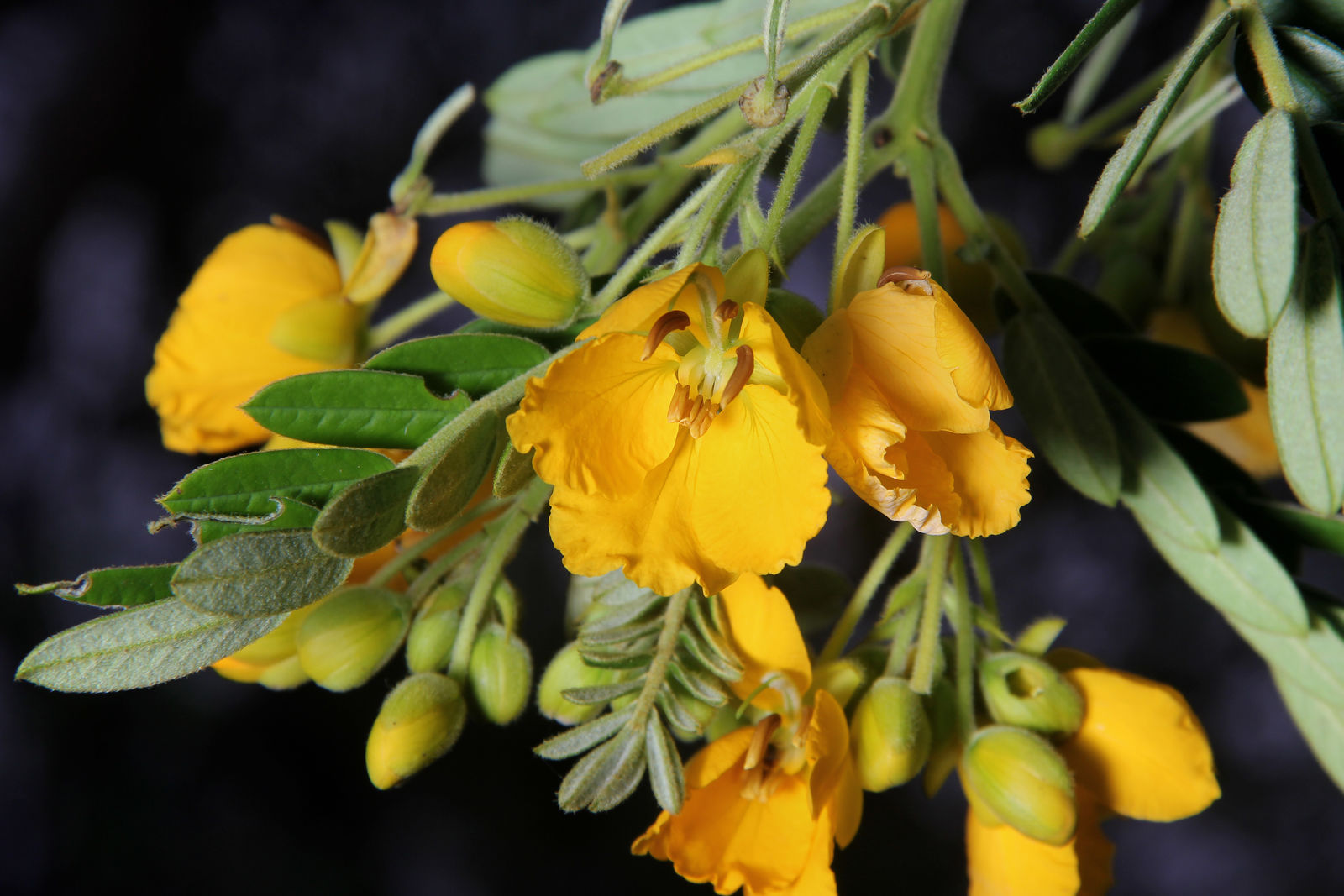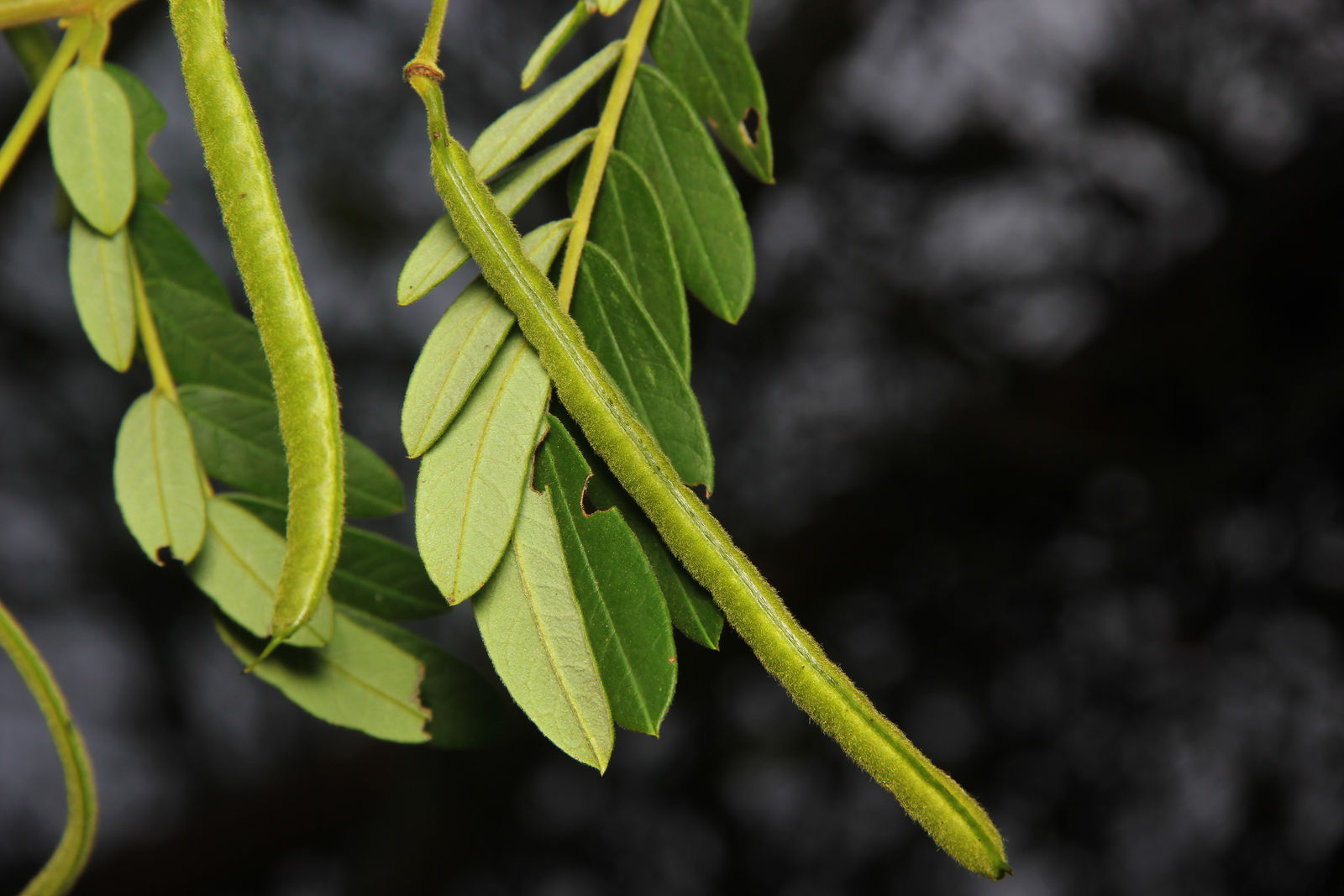Yellow Candlewood
senna multiglandulosa
Also known as: ["Candlestick Senna","Yellow Senna"]
Overview
A deciduous shrub or small tree native to the southwestern United States and Mexico, known for its bright yellow flowers that resemble candlesticks.
Benefits & Perks
["fragrant flowers","wildlife attractant (bees, butterflies, birds)","drought tolerant"]
Botanical Classification
| Phylum: | Magnoliophyta |
| Class: | Magnoliopsida |
| Order: | Fabales |
| Family: | Fabaceae |
| Genus: | Senna |
| Botanical Name: | Senna multiglandulosa |
Plant Characteristics
Basic Information
- Category: Shrubs
- Suitable Location: outdoor garden in a sunny spot, or large container in a bright location
- Suitable For:
- Is Weed: No
- Allergenicity: low
Environmental Needs
- Climate: {"temperatureRange":"10–35°C"}
- Hardiness: {"zones":"9–11"}
- Misting: rarely required, only if ambient humidity is very low
- Drainage: Fast-draining to prevent waterlogging.
- Soil Type: Well-draining, loamy soil with added organic matter.
Maintenance Level
- Maintenance Level: moderate
- Toughness Level: moderate
- Pruning Frequency: Annually in late winter or early spring before new growth begins.
- Pruning Intensity: Moderate pruning to shape the plant and remove up to one-third of old growth.
Care Details
Ideal Sunlight Coverage:
Full sun (6–8 hours of direct sunlight daily). Tolerates partial shade but may become leggy with insufficient light.
Sunlight Tolerance Tips:
Acclimate plants gradually to intense sunlight if moved from shade. Protect from harsh midday sun in hot climates to prevent scorching. Indoors, place near a south-facing window.
Care Requirements
Care Difficulty
moderatemoderate
Sunlight
full sun to partial shade
Rotate plant weekly for even growth; use sheer curtains to filter intense sun; avoid sudden light changes.
Watering
every 7–10 days during active growth, reduce in winter
Water thoroughly until runoff, allow soil to dry partially between waterings, and avoid overwatering to prevent root rot.
Soil
well-draining, loamy soil with some organic matter
pH: Slightly acidic to neutral (pH 6.0–7.0).
Use a cactus mix as a base; avoid heavy clay soils; ensure pots have drainage holes.
Temperature
Thrives in warm conditions, 65–85°F (18–29°C). Tolerates mild frosts but prefers frost-free environments.
Protect from frost; avoid placing near drafty windows; maintain consistent warmth during active growth.
Fertilizing
every 4–6 weeks during growing season
Fertilize only when actively growing; flush soil occasionally to prevent salt buildup; use a balanced formula.
Propagation
Methods
Stem cuttings or seed. Stem cuttings are more common for home growers.
Step-by-Step Propagation Guide
- Take a 4–6 inch cutting.
- Remove lower leaves.
- Dip in hormone.
- Plant in medium.
- Maintain humidity.
Best Time: Spring or early summer when the plant is actively growing.
Environment
Warm, humid environment with indirect light and consistent moisture.
Medium
Well-draining mix of perlite and peat moss or cactus mix.
Hormone
Recommended to use rooting hormone for faster root development.
Timeline
Roots may develop in 3–6 weeks; establish in new pot after 2–3 months.
Tools Needed
Pruning shears, rooting hormone, small pots, misting spray bottle.
Quick Tips
Use healthy, non-flowering stems; keep soil consistently moist; provide bottom heat if possible.
Pruning & Repotting
Pruning Guide
Method
Selective pruning of long or leggy stems, cutting just above a leaf node or bud.
Pruning Plan
Prune to maintain shape, encourage bushier growth, and remove dead or overgrown stems.
Tools
Clean, sharp pruning shears or scissors.
Checklist
Sterilize tools; prune during dormancy; remove dead/damaged stems; shape evenly.
Repotting Guide
Best Season
Early spring before active growth starts.
Pot Size
Increase pot size by 2–3 inches in diameter.
Method
Remove plant gently, trim roots if needed, place in a slightly larger pot with fresh soil, and water lightly.
Suggestions
Repot every 2–3 years or when roots fill the container. Necessary to refresh soil and provide space for growth.
Checklist
Check root bound status; prepare new pot with drainage; trim old roots; use fresh soil mix.
Advanced Care Tips
Watering Mastery
Watering Checklist
Check soil moisture before watering; water deeply; ensure drainage; adjust frequency seasonally.
How to Apply Water Properly
Water directly at the root zone, ensuring even moisture distribution. Water early in the morning to minimize evaporation and allow foliage to dry. Ensure excess water drains away to prevent waterlogging.
Watering Schedule Tips
Water deeply once every 7–10 days during active growth in spring and summer; reduce frequency to every 2–3 weeks in fall and winter. Adjust based on rainfall and soil dryness.
Soil Improvement
Add perlite or coarse sand for drainage; incorporate compost for fertility; ensure aeration with organic matter.
Temperature Stress Management
Signs of Temperature Issues
Chlorosis or leaf drop in cold stress; wilting or scorching in excessive heat.
Cold Stress
Low temperatures slow growth and may cause leaf drop or damage to tender tissues.
Solution: Move potted plants indoors or to a sheltered location during cold spells. Apply a layer of mulch to insulate roots.
Hot Stress
Excessive heat can lead to wilting, leaf scorch, or reduced flowering.
Solution: Provide afternoon shade in extreme heat, increase watering frequency, and use mulch to retain soil moisture.
Fertilizing Guide
Fertilizing Checklist
Check growth phase; dilute fertilizer correctly; apply to moist soil; avoid contact with foliage.
Fertilizing Method
Use a balanced, water-soluble fertilizer diluted to half strength every 4–6 weeks during spring and summer. Avoid fertilizing in fall and winter.
Common Problems & Solutions
Toxicity Warning
Cats
ToxicCats are particularly sensitive to the anthraquinone compounds in Senna multiglandulosa. Ingestion can lead to severe gastrointestinal irritation, dehydration, and potential systemic toxicity.
⚠️ Symptoms:
🌿 Toxic Parts:
⚡ Toxic If:
if eaten
Dogs
ToxicIn dogs, ingestion of Senna multiglandulosa can cause severe gastrointestinal upset due to its anthraquinone content. Symptoms can range from mild discomfort to life-threatening dehydration and electrolyte disturbances.
⚠️ Symptoms:
🌿 Toxic Parts:
⚡ Toxic If:
if eaten
Humans
ToxicSenna multiglandulosa contains anthraquinone glycosides, which act as potent laxatives and can cause severe gastrointestinal distress. Prolonged or excessive ingestion may lead to electrolyte imbalances and potential kidney or liver damage.
⚠️ Symptoms:
🌿 Toxic Parts:
⚡ Toxic If:
if eaten
Frequently Asked Questions
Q: Does Senna multiglandulosa attract wildlife?
A: Yes, it attracts bees, butterflies, and birds.
Q: Is Senna multiglandulosa drought-tolerant?
A: Yes, it is drought-tolerant once established.
Q: What are the common problems with Senna multiglandulosa?
A: Common problems include yellow leaves, wilting, and leaf spots.
Quick Reference
| Family: | Fabaceae |
| Care: | moderate |
| Light: | full sun to partial shade |
| Water: | every 7–10 days during activ |
Get Expert Care Tips
Download the Plantious app for personalized care reminders and plant identification!
Google Play App Store








